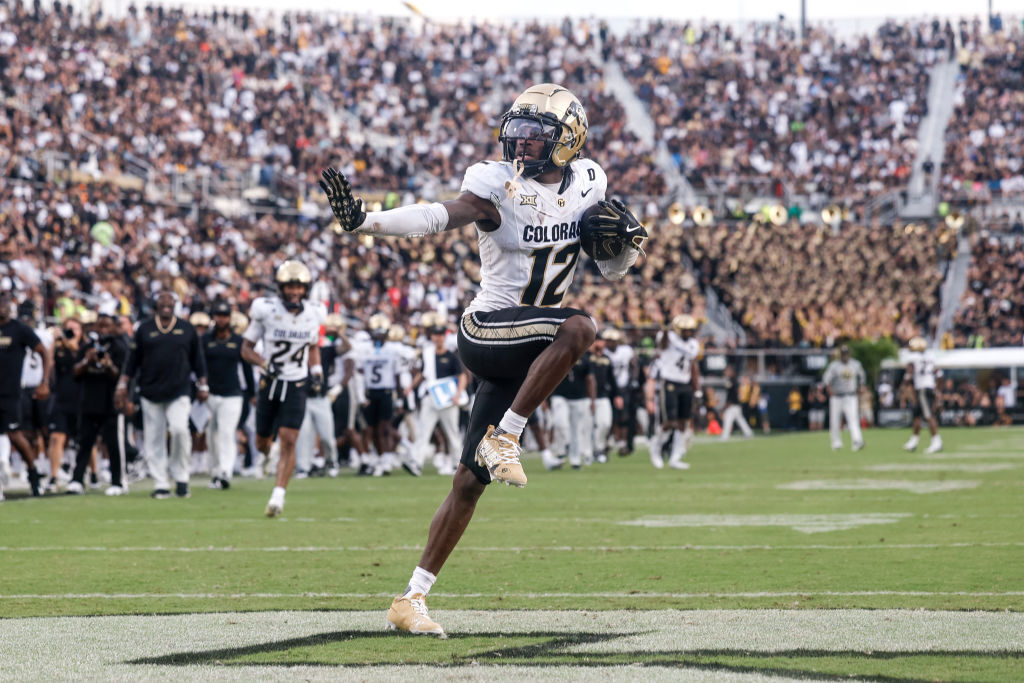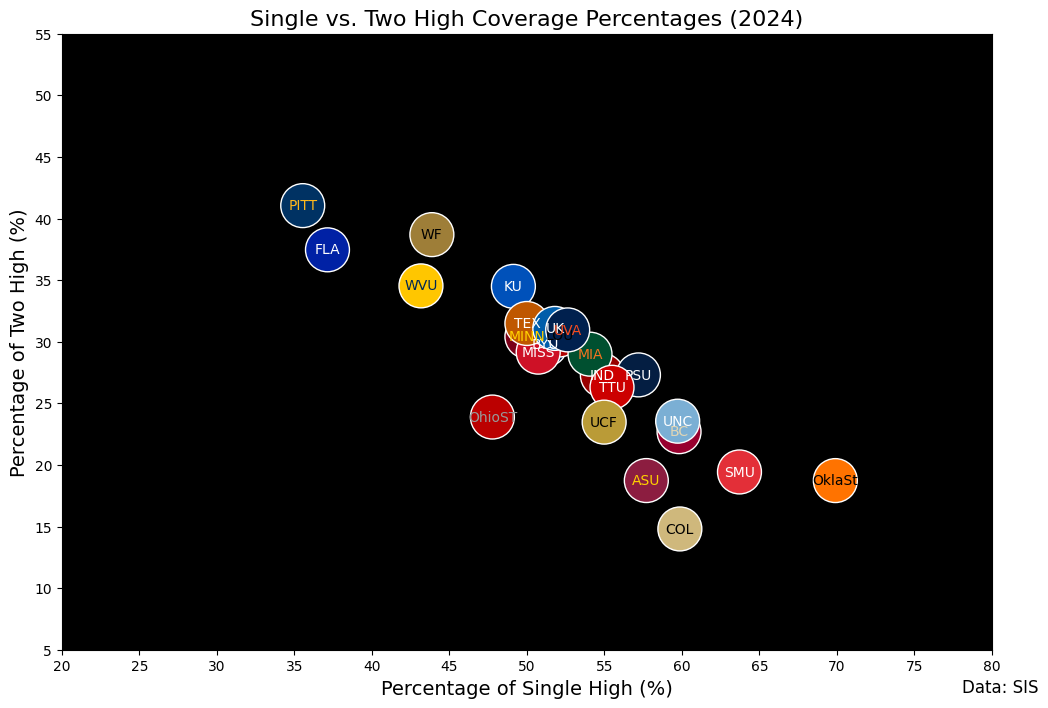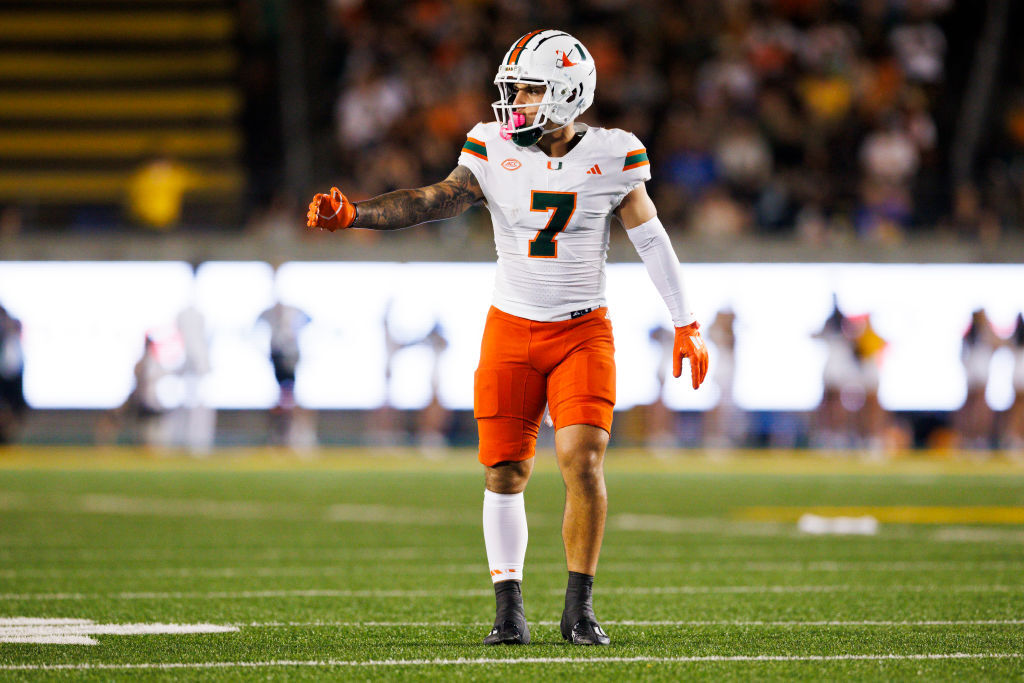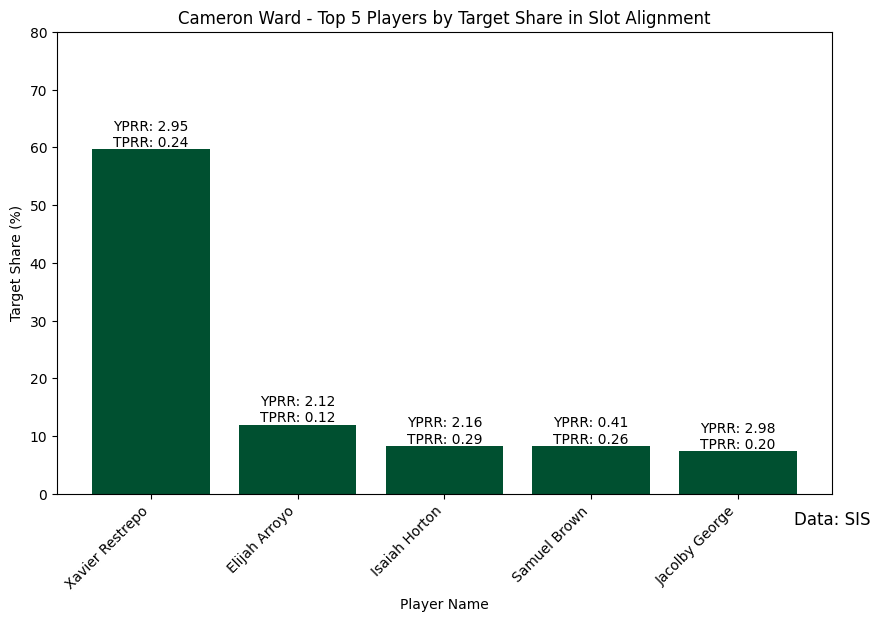CFB DFS DraftKings Main Slate Breakdown: Week 13

Using his experience as a former scout and staff member at Central Florida under Josh Heupel, Jordan Vanek takes an in-depth look at the upcoming CFB DFS main slate on DraftKings. Formerly of The 33rd Team and 4for4 Fantasy Football, Jordan will do a deep dive into the best stacks, running backs, and wide receivers before giving his overall thoughts on some slate strategy.
Week 13 brings a slate packed with high-total games and close spreads, making lineup construction crucial. Using tools like our CFB DFS projections can be a huge asset when piecing together your lineups. These projections help identify the top plays from each team, ensuring you’re guided toward the most impactful options for building optimal lineups.
This week is pivotal, with many teams fighting for bowl eligibility, teams fighting for playoff hopes, and players making a case in a very tight Heisman race. Among the games, I’m especially excited about the Colorado vs. Kansas matchup, which has the potential to be a high-scoring showdown. The Buffaloes are on upset alert, and it will require standout performances from Shedeur Sanders, Travis Hunter, and a true freshman who has stepped up in Jimmy Horn’s absence. This game offers plenty of DFS value, especially with these key players in the spotlight.
Editor’s Note: Looking for more places to play? Check out our PrizePicks promo code and Underdog Fantasy promo code, two of the best DFS sites available today.
CFB DFS DraftKings Picks: Top Stacks, Running Backs, & Wide Receivers for Week 13
There’s enough data available to make predictive analyses about why a team might lean toward certain coverages or schemes against a specific matchup. By studying how these teams have performed against top competition or in comparable scenarios, we can draw meaningful insights.
Single High vs. Two High

Single-high coverage is a defensive scheme where one safety patrols deep in the middle of the field, providing over-the-top support against deep passes while allowing the rest of the defense to focus on the run or intermediate passing. This setup often isolates cornerbacks in one-on-one matchups with wide receivers, increasing the potential for big plays if receivers win those battles. Teams such as Oklahoma State, SMU, Arizona State, and Colorado frequently deploy single-high coverage due to its versatility in addressing both the pass and the run.
For Colorado, employing single-high coverage has notably improved their run defense, which could help contain Kansas RB Devin Neal. Neal has been excellent as a runner, but this scheme might neutralize his impact, forcing Kansas to lean on their passing game. In such a scenario, it will be up to Jalon Daniels to exploit Colorado’s single-high coverage by connecting on deep passes. There’s one Kansas receiver particularly suited for this situation (which I cover below), making him a key piece if Kansas looks to attack downfield.
In contrast, two-high coverage positions two safeties deep, each responsible for one half of the field. This alignment enhances protection against deep passing plays but can expose the defense to vulnerabilities in the run game, short passes underneath, or intermediate sideline routes. For instance, a Cover 2 scheme often leaves gaps in the middle of the field and the seams, as defenders stay closer to the flats to cover shorter routes. Teams like Baylor, Florida, and Pittsburgh rely on two-high coverage to limit explosive plays through the air, prioritizing containment over aggression.
Understanding these defensive tendencies helps to identify matchups that offenses can exploit, particularly for DFS and game strategy purposes.
Man vs. Zone

Man coverage requires defenders to shadow specific offensive players throughout a play, demanding physicality, tight coverage, and elite tracking skills. This approach is commonly used by teams like Oklahoma State, Colorado, and Penn State, with Purdue frequently incorporating single-high safety looks into their man schemes. However, this reliance on man coverage makes these teams particularly susceptible to big plays, especially against high-level offenses that can win one-on-one matchups.
For Colorado, their preference for man coverage creates opportunities for Kansas QB Jalon Daniels to use his legs when passing options aren’t available. Scrambling has been an effective counter against Colorado’s defensive scheme, as quarterbacks like Noah Fifita, Sawyer Robertson, KJ Jefferson, and Brendan Sorsby have all found success on scramble drills against Colorado. With his mobility, Daniels could exploit this tendency, making his rushing upside a significant factor in the game.
In contrast, zone coverage tasks defenders with guarding specific areas of the field rather than trailing individual players. While one-on-one matchups can occur when offensive players enter a defender’s zone, the focus in zone schemes is on spatial awareness, teamwork, and leveraging defensive positioning to disrupt passing lanes. Zone defenses trade the aggressiveness of man coverage for a more balanced approach that can minimize big plays but may allow underneath routes and short gains.
Stacks
Cam Ward ($10,500, QB, Miami)
Xavier Restrepo ($8,000, WR, Miami)
Elijah Arroyo ($4,300, WR, Miami)
Taylor Morin ($5,200, WR, Wake Forest)

Wake Forest has been one of the worst defenses in the country, and Miami can dominate this team in any way they choose. Their primary weakness on defense is in the slot, and no one in the country is better in the slot than Restrepo. Restrepo has a 60% target share from this alignment and is poised for a big game, especially since this will be his final home game for the University of Miami.
Ward is likely going to be a popular option this weekend, and many people will chase Samuel Brown ($3,700). However, I like Arroyo in this matchup. Wake Forest has struggled against tight ends all season, allowing players like Jake Briningstool, Justin Joly, Tyler Neville, and Sam Roush to score touchdowns and post productive games. Arroyo presents a clear path to offset Ward’s salary while differentiating from the field.

For a bring-back option, Morin or Demond Claiborne ($7,600) are worth considering. Factoring in Claiborne’s price, Morin is the better choice. Miami has had trouble covering the slot this season, and Morin has been Wake Forest’s most productive player. While it’s not necessary to run it back with a Wake Forest player, a strong game from Morin could provide a scenario where Miami scores even more points.
This content can help you make better CFB DFS picks
- To access this content, subscribe to CFB Premium or purchase a 3-day trial.
- A CFB subscription will allow you to access this content and much more!
About the Author
Jordan Vanek has been playing DFS since 2016. He attended the University of Central Florida, where he joined the football staff as a player personnel intern and participated in the recruitment of Dillon Gabriel and Ryan O’Keefe. Formerly of The 33rd Team and 4for4 Fantasy Football, Jordan joined the RotoGrinders team in 2024 and will be providing College Football and NFL DFS content for Premium subscribers. Follow Jordan on Twitter – @JordanVanekDFS
